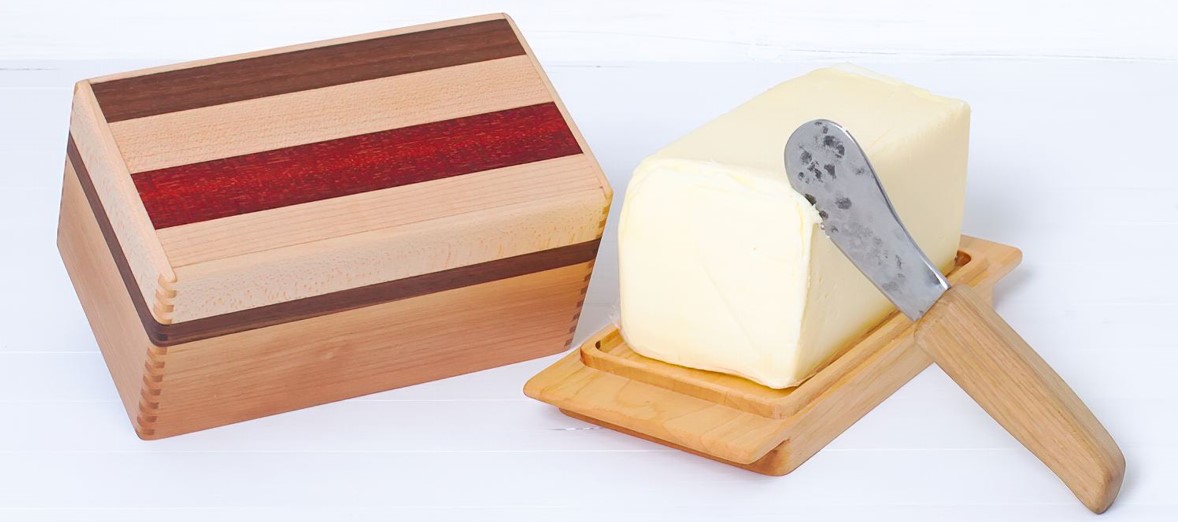A few scientific facts about butter
Butter is a water-in-oil emulsion
Two brief examples to clarify the concept of emulsion:
1 – When you put water in your wine, they both mix without hesitation and become a new product without you having to mix them. Even if you let it sit, water and wine will not separate again. This is not an emulsion
2 – To make a salad dressing, one mixes some oil and vinegar in a bowl. They only mix when you vigorously whisk them together and if you let it sit for a while they will separate again. They did not become a new product, they retained their identity. That is an emulsion.
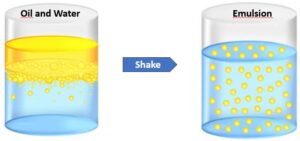
Let’s get back to butter:
Cream is milk that contains between 15 to 25% of proteins and milk globules.
Imagine that a globule is a microscopic membrane filled with grease molecules. Being so little, since grease is lighter than water, they float. This forms a suspension at the surface of the milk: cream.
When we shake them vigorously, these globules break apart and the grease is freed to float and agglomerate with the grease from other globules. It forms clumps that will separate from water. This process creates two new substances: a solid, the butter, and a liquid, the buttermilk.
Most frequently made from cow’s milk, butter can also be manufactured from the milk of other mammals, including sheep, goats, buffalo, and yaks.
Approximately 20 liters of whole milk yield one kilogram of butter. Churning can take between 30mn to up to 2 hours depending on the temperature and the type of machine used.
Butter remains a firm solid when refrigerated, but softens to a spreadable consistency at room temperature, and melts to a thin liquid consistency at 32 to 35 °C (90 to 95 °F).
The density of butter is 911 grams per litre (0.950 lb per US pint).
It generally has a pale-yellow color, but varies from deep yellow to nearly white. Its natural, unmodified color is dependent on the source animal’s feed and genetics, but the commercial manufacturing process commonly manipulates the color with food colorings like annatto or carotene.
Salt is sometimes added to butter.
Salt was initially used as a preservative. This was of course critical in the old times when there was no refrigerator to keep butter in. The more salt, the longer the butter stayed edible. Note that in the USA, Ireland, the UK and the Nordic countries, salt is usually added to it. The rest of Europe most commonly use unsalted butter. For us here in Canada, finding salted and unsalted butter side by side in the shelves of all our stores seems to indicate that both are used quite widely.
Some major religious & cultural links to butter:
Butter is one of the oldest and most revered products that we know of.
Judeo-Christian history
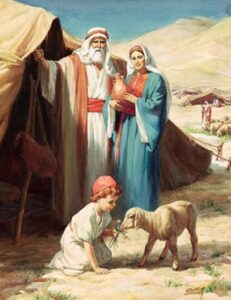
In the Bible, butter was considered a dish for festivities
Abraham and Sarah are said to have offered a feast of meat, milk and butter to the three angels visiting them.
Hinduism also holds butter and ghee in a very special place
Lord Krishna, said to be the 8th incarnation of Lord Vishnu is known as the god of love, tenderness and compassion. Hindu mythology portrays him as a prankster, a gentle lover, a universal supreme being and child-like God.
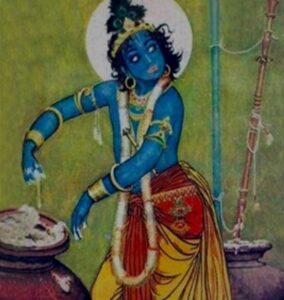
Krishna, was known to steal butter from the neighborhood. Along with his friends, he would quietly enter people’s houses and grab clay pots full of freshly churned butter.
Even to this day he is addressed as ‘Makhan Chor’, i.e. the butter thief.
It is also said that Krishna stole hearts that were as pure and soft as butter.
Month of Kartik celebration:
The month of Kartik marks the shift from a time of daily spiritual practice to a time of harvest which symbolizes enlightenment, awareness and consciousness.

Once a year in the month of Kartik, mid-October to mid-November, Hindus light ghee lamps to Lord Krishna
On the more anecdotal side:
Butter is said to have first been made accidentally by a nomad who filled a sheepskin with milk and after one day of riding his horse discovered that the milk had naturally turned into this fascinating new product.
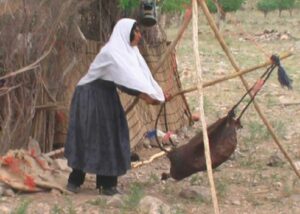
A similar sheep skin technique is still used today in some regions by simply shaking it instead of tying it to a horse and riding all day long.

